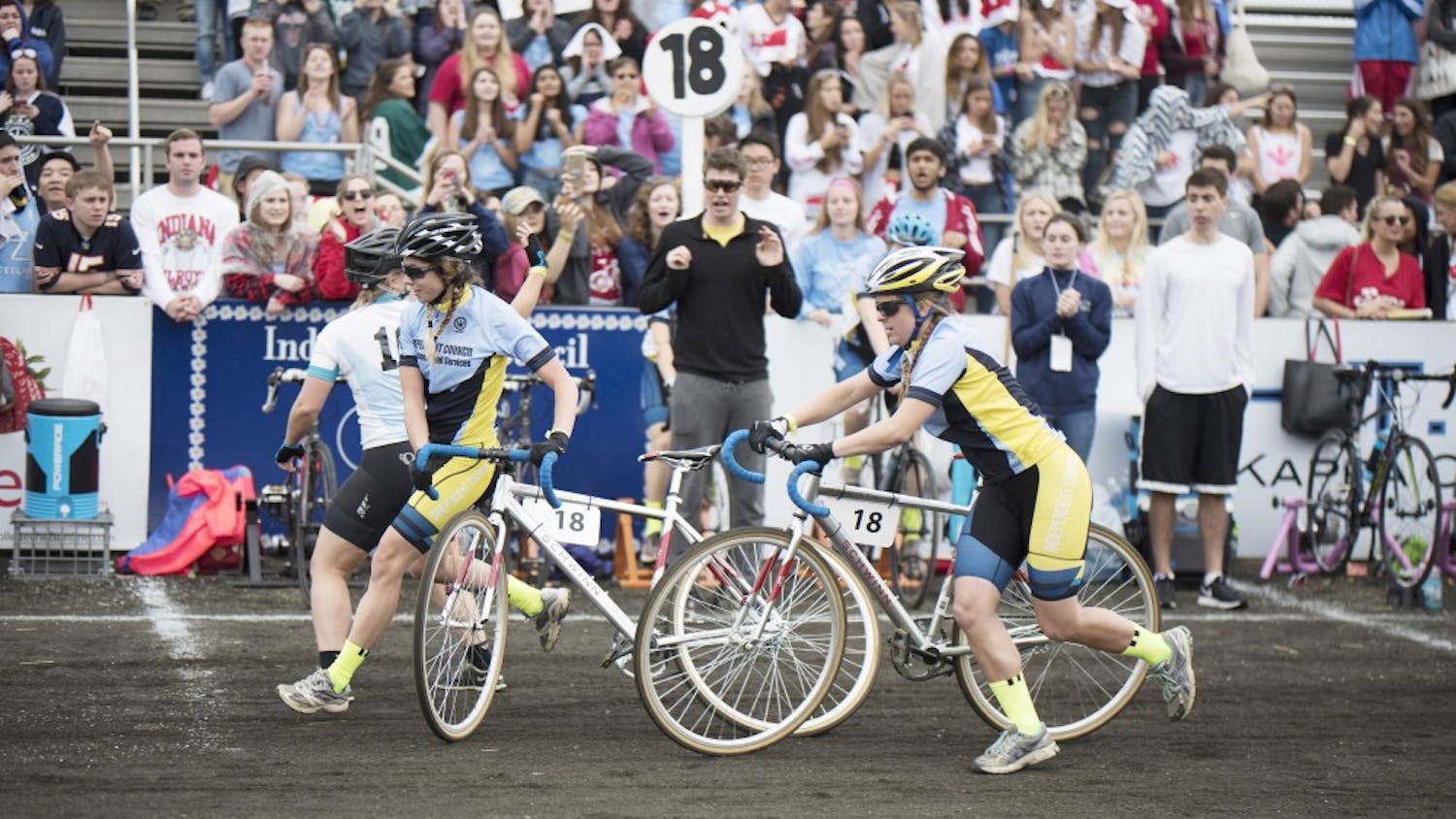Exchanges are what can make or break a Little 500 for any team. If successful, exchanges can keep a team in the race and potentially allow it to vie for the win.
When failed, however, they can kill precious seconds of a team’s effort and ruin its race. Precision, speed and coordination are key. Below is a step-by-step guide with rider input about what makes a perfect exchange.
1 On the preceding lap, the rider on the track signals to the rest of the main pack, or peloton, that he or she will be making an exchange. The rider moves to the outside of the field and begins a burnout lap while the new rider takes position at his or her respective pit.
2 Heading into the final turn before the exchange, the outgoing rider should be well outside the peloton. Once the biker completes the turn, depending on where the pit is, the rider should begin the braking process.
3 At this point, the outgoing rider should be slowing down as he or she nears the pit. The incoming rider should also begin running from his or her dead stop to catch up to the bike and keep momentum during the exchange.
4 Once the outgoing rider enters the pit, the rider should have his or her pedals adjusted so the new rider can start from where the old left off. The outgoing rider also adjusts his or her hands on the handlebar so that the new rider can jump on. The two meet.
5 The new rider puts his or her hands on the handlebar as the outgoing rider jumps off inside the designated area. The incoming rider then hops on as the bike is still moving and begins pedaling to catch back up with the peloton.
1 On the preceding lap, the rider on the track signals to the rest of the main pack that he or she will be making an exchange. The rider moves to the outside of the field and begins a burnout lap while the new rider takes position at his or her respective pit with the new bike.
2 Heading into the final turn before the exchange, the outgoing rider should be well outside the peloton. Once the biker completes the turn, depending on where the pit is, the rider should begin the braking process.
3 At this point, the outgoing rider should be slowing down as he or she nears the pit. The incoming rider should also take position to hop on the bike for the quickest start possible.
4 Once the outgoing rider enters the pit, he or she should be slow enough to make an immediate stop. The outgoing rider and the incoming rider meet, and the outgoing rider jumps off the bike in the designated zone to avoid any penalty.
5 The new rider then jumps on the new bike from a dead start and begins pedaling to catch back up with the peloton.
Anatomy of an exchange
Get stories like this in your inbox
Subscribe




